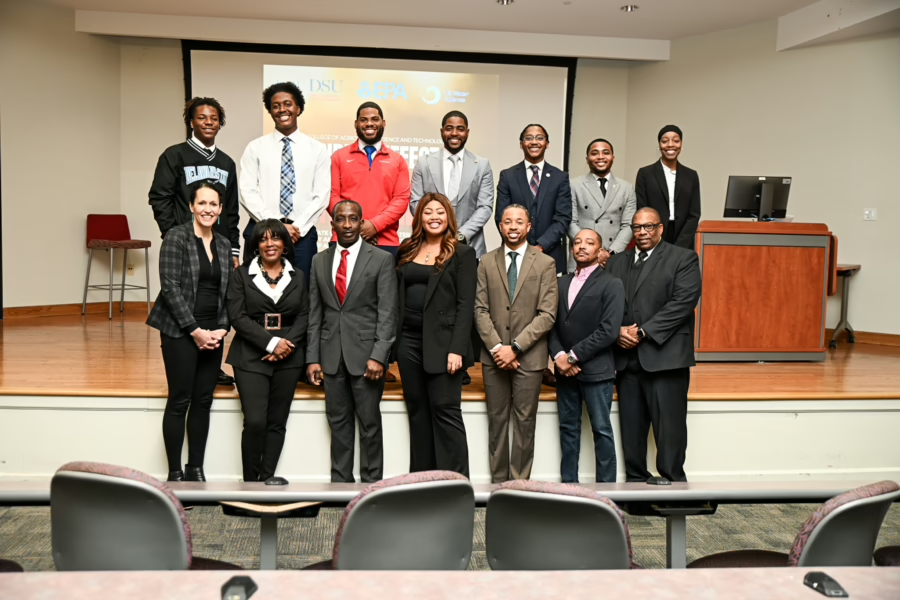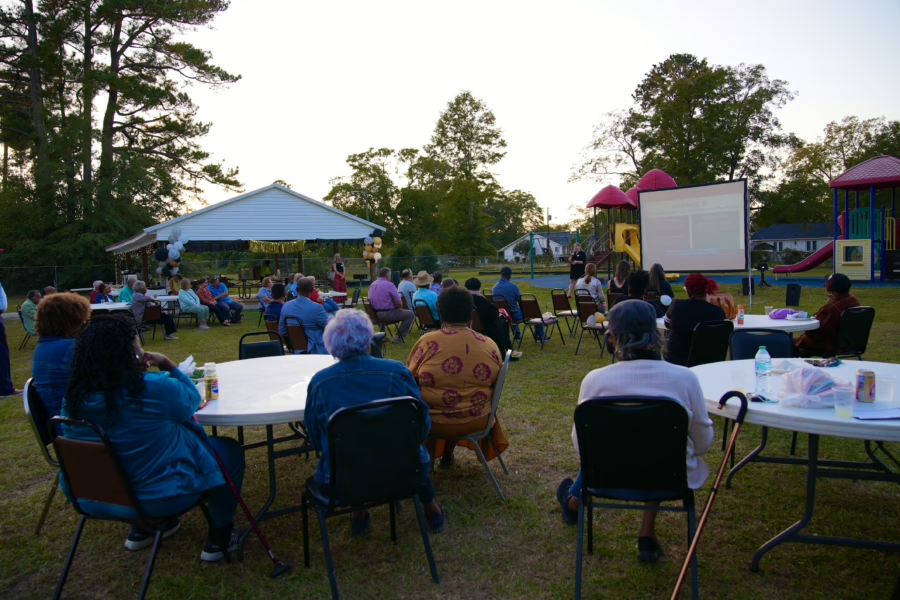Water infrastructure is the backbone of thriving communities and ecosystems. With the historic federal investment into our water systems, water utilities and those who work closely with them can lead the charge to help ensure new dollars don’t lead to business-as-usual outcomes. The US Water Alliance’s Equitable Infrastructure Principles aspire to ensure federal water investments and outcomes are equitable, resilient, and capable of delivering multiple benefits, but can only do so when applied across the infrastructure cycle. In this way, water investments can strongly contribute to everyone’s ability to thrive—which is more important now than ever, as we collectively face aging and failing water infrastructure, climate impacts, pollution, emerging contaminants, cyber threats, workforce shortages, and increasing economic inequality.
The Equitable Infrastructure Implementation Cycle
Engagement, Goal Setting, Scoping, and Planning
Traditional single and limited-goal planning approaches, the backlog of needed water investments, and time pressures to obtain Infrastructure Investment and Jobs Act (IIJA) funding conspire toward business-as-usual outcomes. However, the IIJA provides a critical opportunity to re-envision and reimagine how capital investments are made in water. Moving towards an equitable infrastructure paradigm means projects and programs achieve multiple goals, including addressing service, health, economic, and environmental disparities. Multi-benefit projects require deeper stakeholder engagement, inclusive goal setting, and meaningful and effective planning with key partners.
The following are examples of the range of goals that sustainability and human-centered infrastructure planners and investors may share. While not comprehensive, this list may be used as a checklist when planning projects and programs:
- Social benefits such as service equity; community-determined, community-led solutions; community capacity building for the purposes of project delivery, maintenance, or economic benefit; community cultural wealth; and improved public health and reduced health outcome disparities.
- Environmental benefits such as source water replenishment and/or protection; climate mitigation/adaptation/action; soil protection or enhancement; air quality improvement.
- Economic benefits such as job creation; development of a diverse and skilled environmental workforce; community prosperity and stability; returns on investment for opportunity communities; lifecycle cost reduction or benefit/reduction of rate impacts; minimization of public debt; maximization of use of various available grants and lowest cost financing.
- Integrated benefits such as sustainable and sustaining investments (One Water, Net Zero, Zero Waste, One Health, equitable development, etc.); pre-disaster mitigation, risk reduction, and disaster preparedness; addressing non-regulated, generally unfunded community needs (e.g., flood risk mitigation); environmental justice; reduction of seismic vulnerability, flood risk, other risk mitigation.
- Regulatory benefits and performance including regulatory compliance or meeting other mandated obligations; alternative compliance goals.
- Process improvements such as easier, less wasteful processes from investment to implementation; appropriate and accelerated adoption of best approaches; avoidance and mitigation of unintended negative consequences; disadvantaged business participation; adaptive management; alignment with overall planning and community goals.
Funding, Financing, and Structuring
While the bulk of the new federal influx will be through traditional SRF channels, there is an opportunity to aggregate and leverage different sources of funding and to innovate. Different sources of funding and frameworks for financing and delivery come with different terms, benefits, limitations, and obligations. Matching priorities to funding sources can often mean matrixing various funds and financing approaches together. This is especially true of projects or programs that seek to maximize benefits or address multiple community priorities.
The following are examples of common funding sources and financing approaches for water infrastructure projects:
Funding Sources:
- Exactions for dedicated funding (taxes, stormwater fees, rents, usage rates, etc.)
- Federal and state allocations and programs
- Utility allocations
- Philanthropic funding
- Private capital
- Lawsuit settlements
Financing Approaches:
- Debt-related capital with performance or delivery obligations (revenue bonds, SRF and WIFIA loans, impact bonds, CDFIs, and other loans)
- Debt-free capital with performance or delivery obligations (incentives, SRF grants, planning assistance, other grants)
- Loan/loss reserves, risk pooling, aggregation, etc.
- Cash/pay-as-you-go
- Hybrid
Typically, in the water sector, the utility receiving infrastructure funds is independently responsible for implementing a project or program. They obtain and spend the money, build the project with contracted firms, report on progress, and manage the new asset(s). New implementation frameworks and structures are beginning to emerge as more multi-benefit projects are designed and funded. Implementation frameworks or structures can vary in the scale and range of projects they can deliver. Each approach has pros and cons, and local stakeholders must decide what approach best meets their needs. They might consider the costs of debt and administration, cost and ease of implementation, performance related to priorities and obligations, available expertise and capacity, and other factors.
Examples of nontraditional financing implementation frameworks to explore include:
Designing the right overall funding and implementation approach is critical to the principle of maximizing economic opportunity and doing no harm by proactively addressing affordability, livability, and ways to reduce negative development impacts. Implementation approaches can protect existing businesses and predicate job opportunities.
Infrastructure Project and Program Delivery
Planning and financing strategies fundamentally shape how projects are delivered. For traditional water infrastructure projects, utilities often use a design-bid-build method of project delivery. In addition to securing the funds to proceed with projects, utilities—with either contracted or in-house expertise—scope and schedule projects, develop initial estimates, and issue requests for proposals for project design services. Then, engineering design firms respond with proposals and cost estimates. The utility then seeks construction bidders to construct the completed design while it remains responsible for reporting on and managing the new assets. Every step of the process requires utility project management capacity. And with growing rate pressure and local lowest-bid requirements, it can be difficult for utilities to use selection criteria aside from lowest cost and qualifications. Over the past few decades, utilities have begun to employ alternative processes where teams submit one proposal for multiple aspects of a project, including combinations of design, build, operation, and finance.
An opportunity to shift this process towards more equitable processes and outcomes lies in shaping the program or project brief and selection process to prioritize approaches that achieve financial, social, and environmental benefits and community priorities. Some utilities also include requirements for participation by disadvantaged businesses and Project Labor Agreements, or other mechanisms that increase employment of underrepresented people. A few leading-edge utilities are also implementing social impact partnership opportunities with private sector partners working on their capital projects and programs, creating opportunities for firms to align corporate social responsibility efforts with communities impacted by the capital project.
Choosing and delivering infrastructure projects in ways that align with the principles for equitable water infrastructure can involve a broad array of strategies and tactics, including:
- Incorporating triple bottom line evaluation criteria and making the criteria and bid proposals publicly available. These criteria may include results from racial equity impact assessments (REIAs) and/or community engagement.
- Prioritizing the use of nature-based solutions, distributed infrastructure, and community partnership and accrual of benefits from infrastructure.
- Partnering with local policymakers to implement anti-displacement, opportunity creation, and environmental justice policies and practices.
- Partnering with other community investors who are planning capital projects, housing development, education opportunities, and other investments to maximize resident benefits and stability.
- Forecasting of types of contracting needs and providing readiness training by the utility and its partners.
- Finding opportunities to incorporate wealth building, particularly jobs, apprenticeships, and trainings for people in the communities where the work is happening or with those unemployed, underemployed, or underrepresented in the water workforce regionally.
- Minimizing construction impacts on local neighborhoods such as dust, noise, pollution, and disrupted access to streets, parking, businesses, or other spaces where people flow.
- Where possible, coordinating with transportation and telecom agencies to implement a dig-once approach to tearing up streets and sidewalks.
- Inviting the community to benefit from the construction activities themselves, e.g., ensuring space for locally run food trucks near work sites or partnering with schools to educate students and residents about the project and safely tour the site.
- Ensuring procurement agreements adhere to legal and vetted community benefits policies and programs, which may require selected firms to meet requirements that accrue benefits locally (such as hiring requirements and delivering on community priorities).
Equitable delivery requires consistent engagement and action that can have enduring benefits from design through construction.
Service Equity in Operations and Maintenance
Service equity comes into play in the provision of infrastructure and after the infrastructure is built and the ribbons are cut. It entails addressing historical inequities in water access, quantity, and quality and ensuring that all people have access to safe and reliable water and wastewater services. It also entails how infrastructure and services are maintained and operated.
Often, the concept of service equity in operations and maintenance (O&M) refers primarily to the long-term care of the infrastructure assets and their performance across a service territory. Shifting this stage of the investment cycle towards equity requires continuous tending to the organizations, people, relationships, community priorities, and processes fostered throughout all the project phases. In this broader vision, performance needs to be measured against how elements work and are maintained to maximize service and other triple bottom line goals established at the project or program’s onset.
- Establish pipelines for people from high barrier and underrepresented groups to access careers in the water workforce, considering not only entry-level training and maintenance, but permanent positions at all levels of a utility—from operations to executive leadership.
- Build the capacity and awareness of local, small, minority, and women-owned businesses and contractors to bid on future projects so that project investments directly benefit the local economy and build wealth in ways that help address economic disparities across racial groups.
- When applicable, turn infrastructure assets into community assets through designing for multiple uses and benefits, and by offering tours and educational outreach, community space, or venues for arts and cultural activities.
- Sustain productive working groups, community oversight and advisory bodies, and other collaborative social infrastructure.
- Prioritize infrastructure maintenance, repair, and replacement using community need and equity-based criteria, distancing the prioritization as much as possible from politically-driven requests and over-reliance on complaints that tend to be disproportionately concentrated in wealthy areas with high levels of service.
Many of the ways utilities can go above and beyond for racial equity can be found within their operations. Those efforts will be most successful if led by and grounded in lived experiences of underrepresented groups in the workforce and those bearing the brunt of water inequities. Integrating them is one of the biggest shifts that those seeking equity through infrastructure can make.
Evaluation and Adaptive Management
The last phase of the infrastructure investment cycle discussed here is about evaluating what worked, what failed, what goals were and weren’t achieved, how well certain methods played out, and then using these lessons to adapt future approaches. Done sufficiently, evaluation includes a holistic project assessment and not just an assessment of regulatory or funder-prescribed obligations. Results should be shared as widely as possible—especially with partners. The size and pace of the risks and cycles of change water managers face are escalating, and even with enhanced engagement, nimble evaluation and adaptive management are even more critical.
Understanding infrastructural, social, health, and environmental risks and how the project or program addressed those risks is critical. Lessons backed by data need to integrate with and inform the future steps in the investment cycle. Understanding how original or baseline modeling held up and adjusting modeling for future projects and conditions is also important—even when certain trends, like climate and demographic shifts, are changing constantly. By embracing transparency and sharing expertise, project partners build trust among themselves and in their communities, all while helping build and mature the larger field of practice by making their approaches more replicable for others.
Share your thoughts!
Equitable infrastructure investment is only possible by working together and sharing ideas and best practices. The US Water Alliance invites you to share your thoughts on social media using #OneWater, or by submitting ideas directly to Emily Simonson, Director of Strategic Initiatives, at esimonson@uswateralliance.org.
This is part two of a four-part series on equitable infrastructure implementation.



